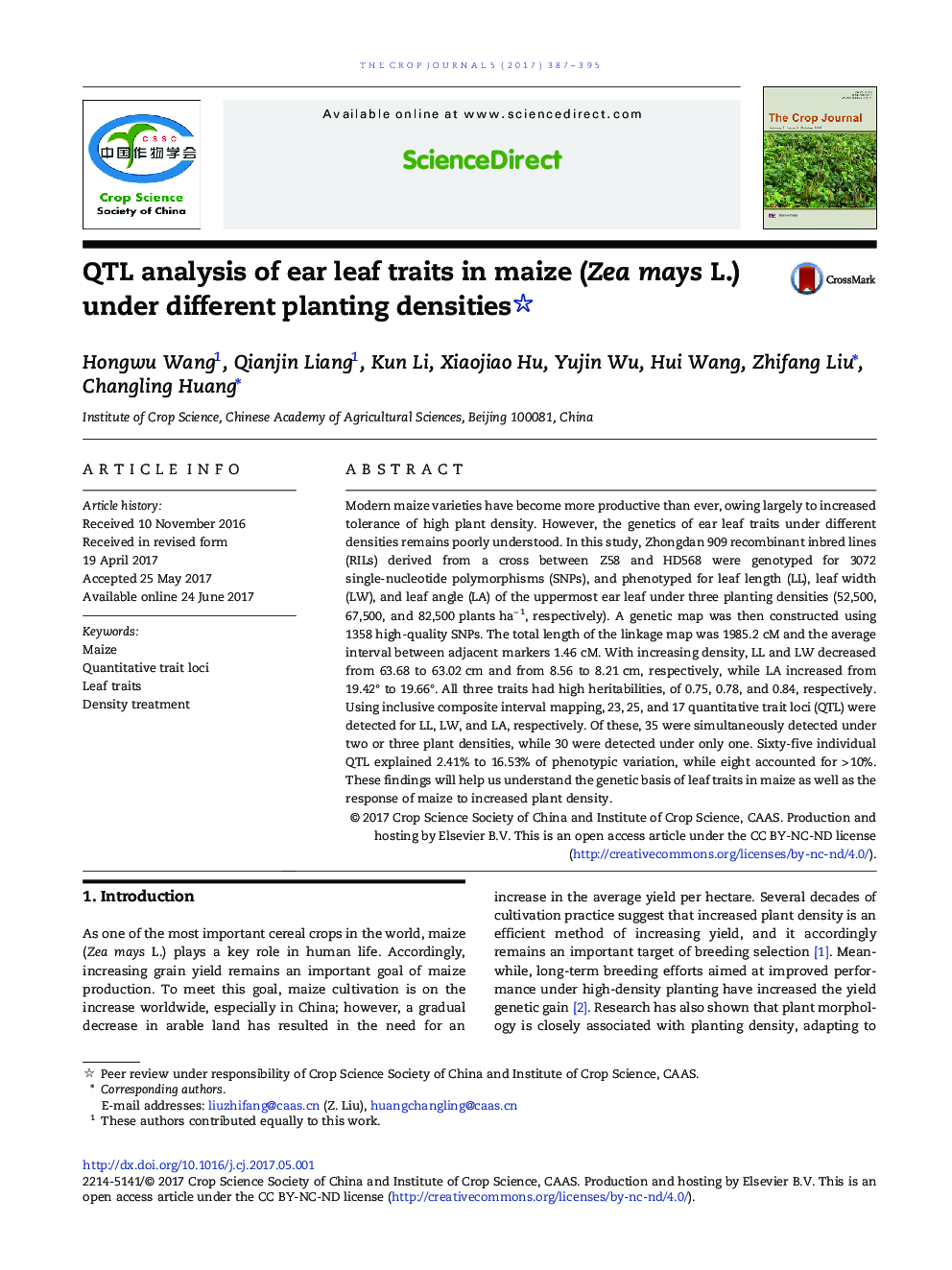| Article ID | Journal | Published Year | Pages | File Type |
|---|---|---|---|---|
| 5520769 | The Crop Journal | 2017 | 9 Pages |
Modern maize varieties have become more productive than ever, owing largely to increased tolerance of high plant density. However, the genetics of ear leaf traits under different densities remains poorly understood. In this study, Zhongdan 909 recombinant inbred lines (RILs) derived from a cross between Z58 and HD568 were genotyped for 3072 single-nucleotide polymorphisms (SNPs), and phenotyped for leaf length (LL), leaf width (LW), and leaf angle (LA) of the uppermost ear leaf under three planting densities (52,500, 67,500, and 82,500 plants haâ 1, respectively). A genetic map was then constructed using 1358 high-quality SNPs. The total length of the linkage map was 1985.2 cM and the average interval between adjacent markers 1.46 cM. With increasing density, LL and LW decreased from 63.68 to 63.02 cm and from 8.56 to 8.21 cm, respectively, while LA increased from 19.42° to 19.66°. All three traits had high heritabilities, of 0.75, 0.78, and 0.84, respectively. Using inclusive composite interval mapping, 23, 25, and 17 quantitative trait loci (QTL) were detected for LL, LW, and LA, respectively. Of these, 35 were simultaneously detected under two or three plant densities, while 30 were detected under only one. Sixty-five individual QTL explained 2.41% to 16.53% of phenotypic variation, while eight accounted for > 10%. These findings will help us understand the genetic basis of leaf traits in maize as well as the response of maize to increased plant density.
